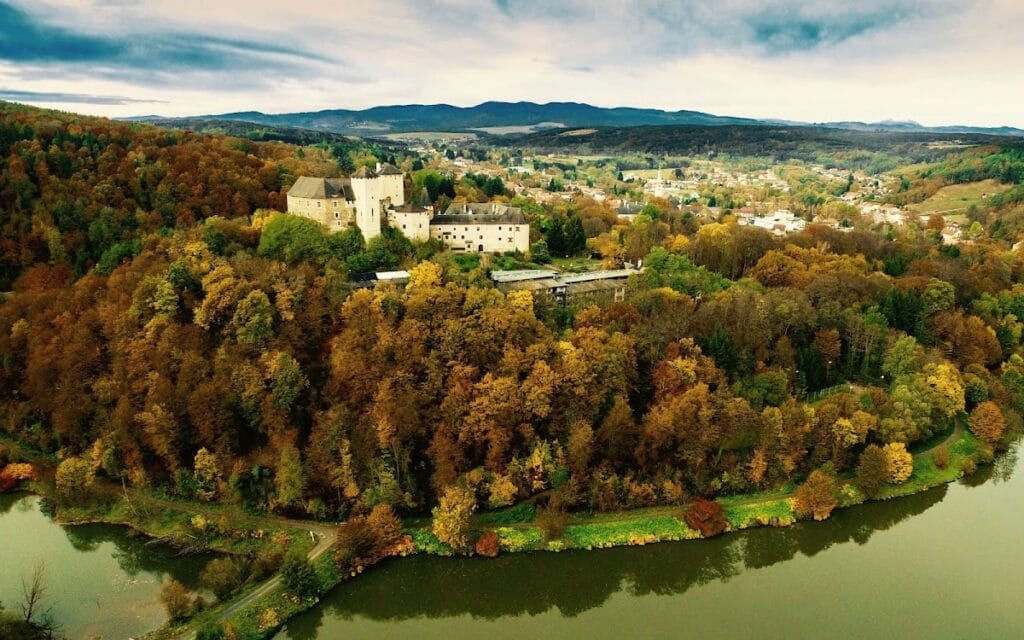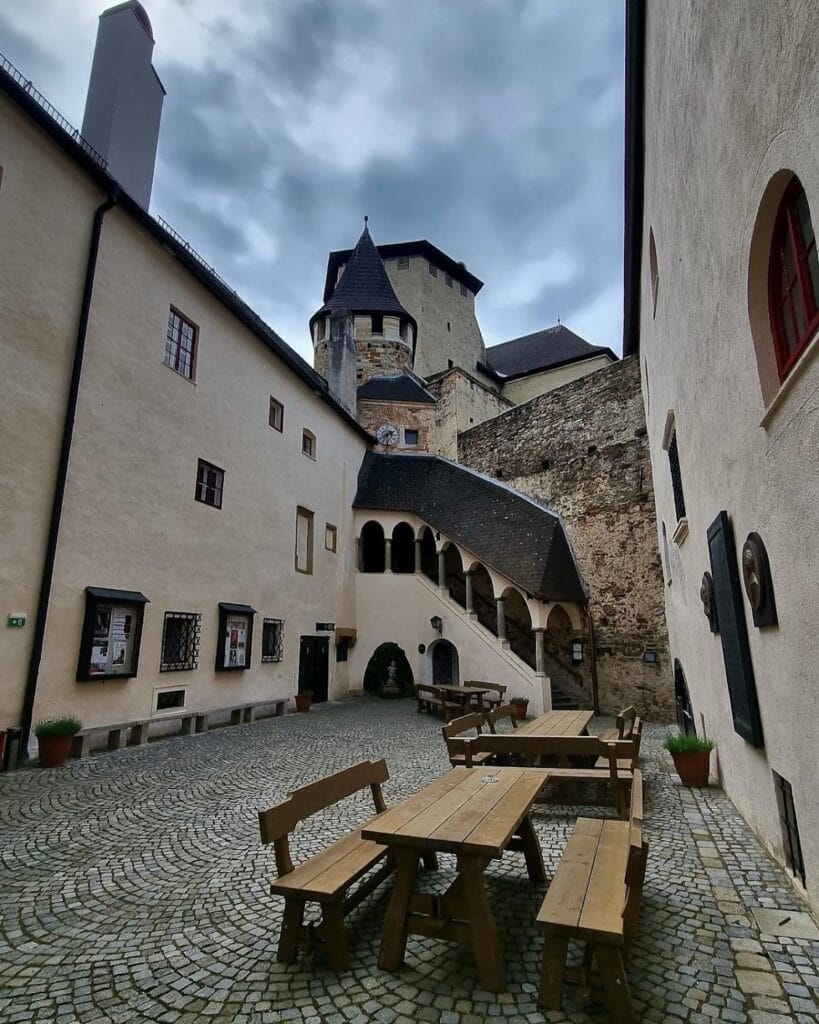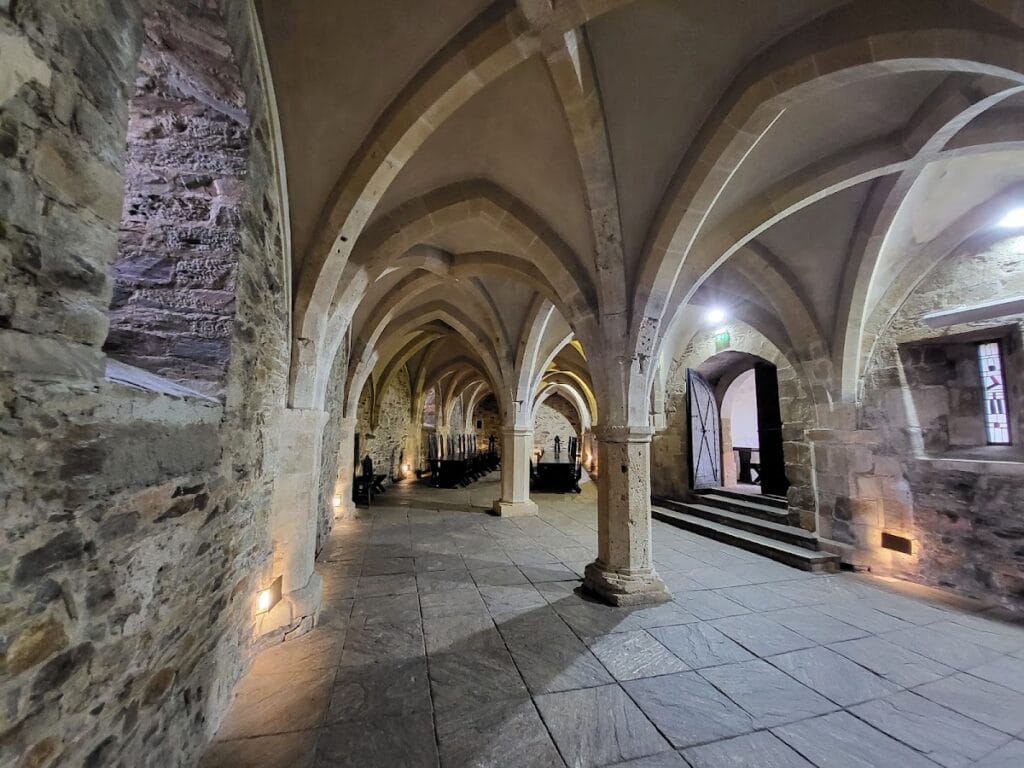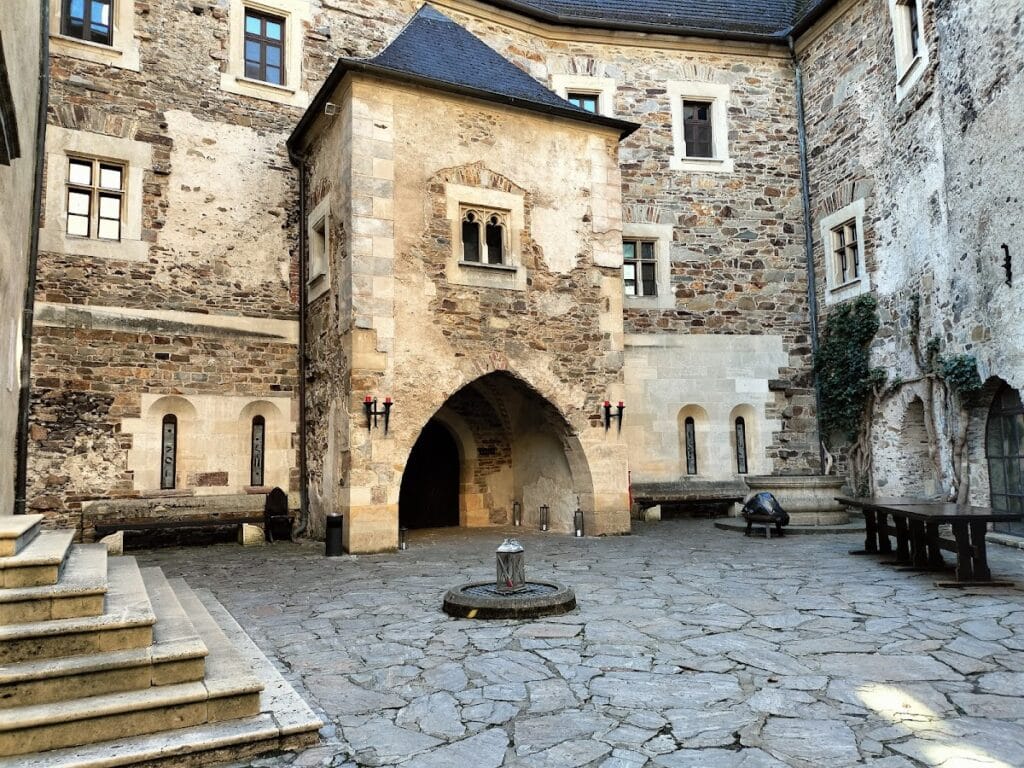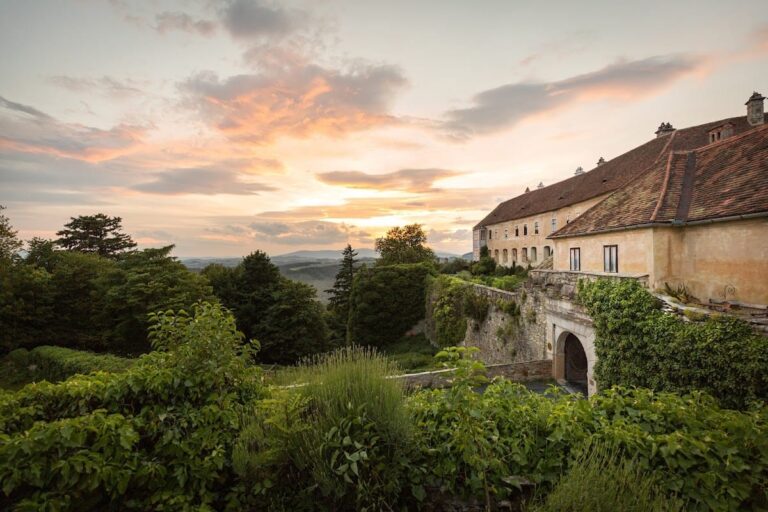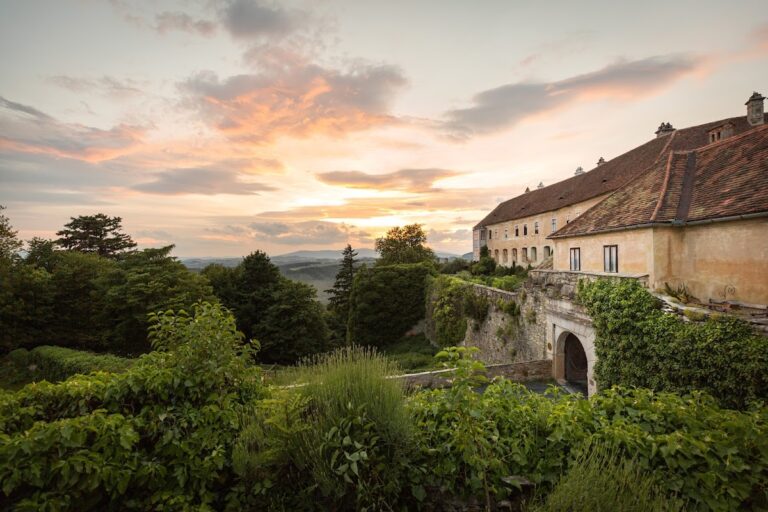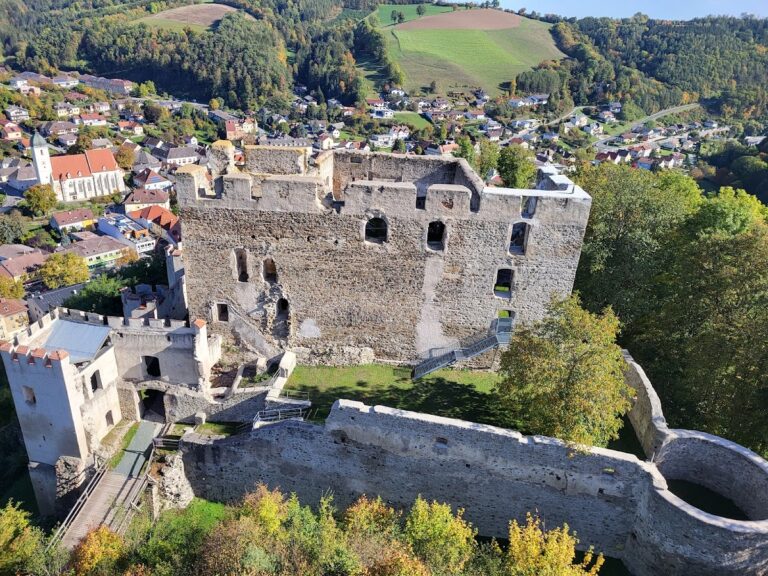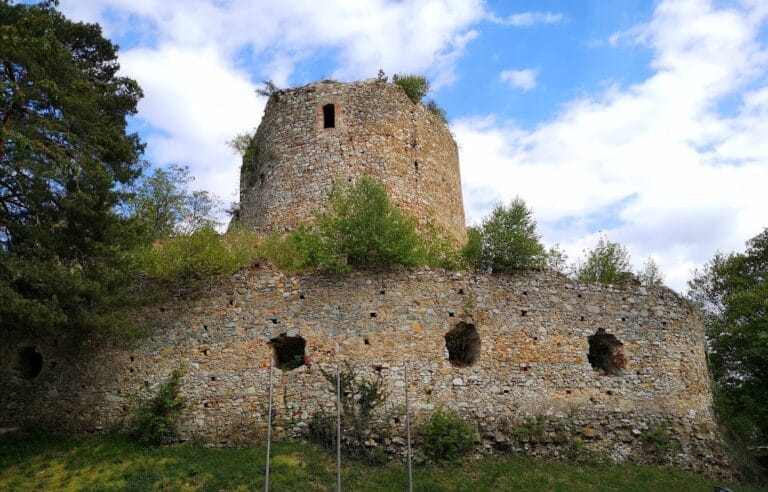Lockenhaus Castle: A Historic Fortress in Austria
Visitor Information
Google Rating: 4.7
Popularity: Medium
Google Maps: View on Google Maps
Official Website: www.ritterburg.at
Country: Austria
Civilization: Medieval European
Remains: Military
History
Lockenhaus Castle, situated in the municipality of Lockenhaus in modern-day Austria, was originally established by early Illyrian and Celtic peoples during the Stone Age using locally sourced materials. The fortress, initially known by the names “Leuca” or “Léka,” first appears in written documents dating back to 1242. It occupies a strategic location in the Güns Valley near the Hungarian border, playing a vital role in the region’s defense.
The castle’s construction began around the year 1200, blending Romanesque and Gothic architectural styles, and it served primarily as a stronghold against invasions, notably those posed by the Mongols during the medieval period. It was part of the Roman province of Pannonia and witnessed habitation by Germanic and Slavic communities across centuries. During the 13th and 14th centuries, the fortress was owned and managed by prominent noble families, including the Güssinger from 1266 until approximately 1390.
In 1337, the castle suffered destruction under the orders of Charles I of Hungary. Despite this, subsequent owners rebuilt and reinforced it, as it endured further damage during the Turkish War of 1683 and during an uprising in the 18th century. Throughout its history, the castle changed hands among notable families: the Kanizsay from 1390 to 1535, the Nádasdy family from 1535 to 1676, and thereafter the Esterházy lineage until 1968.
A particularly infamous chapter involves Francis II Nádasdy, who married Elizabeth Báthory, often called the “Blood Countess” due to allegations of brutal and sadistic crimes. Though widely accused, historical records show these charges were annulled through a legal proceeding aimed at removing her from control over her estates, underscoring complex political motives behind her prosecution.
The settlement near the castle earned market rights in 1492, signaling its growing administrative importance. Under Francis III Nádasdy, who lived between 1622 and 1671, the castle received major structural improvements that reflected the shifting needs of the noble household and increased defensive concerns.
Following World War II, some restoration efforts were undertaken under the occupation of the Red Army. More extensive private restoration began after 1968 when Professor Paul Anton Keller and his wife Margaret acquired the castle. Recognizing its historical value, they initiated a foundation in 1980 dedicated to overseeing ongoing preservation work and repairs.
Lockenhaus Castle also holds cultural significance, as it was featured in medieval scenes of Rudolf Steiner’s mystery drama, “The Soul’s Probation,” and is situated within the Naturpark Geschriebenstein, connecting it to the natural and historical heritage of the region.
Remains
Lockenhaus Castle is characterized by a robust medieval layout combining Romanesque and Gothic architectural elements. Its defensive outer walls are reinforced by circular towers, showcasing construction typical of early 13th-century fortresses. The large complex features two courtyards separated by heavy masonry, with the lower courtyard housing a tavern space that served the castle community.
One of the most striking interior spaces is the Kultraum, or “Cult Room,” positioned centrally on the first floor. This unique chamber includes a double apse—a rounded architectural recess often used in ecclesiastical buildings. Access and natural light originally entered solely through a hole in the ceiling, a feature that historians have linked to the Knights Templar, granting this chamber the alternative name “Knight’s Hall.”
Adjacent to this is the Rittersaal, or Great Hall, distinguished by its soaring Gothic vaulting with elaborate cross-ribbed arches. Originally intended as a communal dining area for the castle’s inhabitants, it is sometimes called the Gothic Knights’ Hall. A notable detail is the presence of red algae near the entryway, associated in local tradition with the site where the last Knights Templar were said to have been executed.
The castle also contains a chapel built within one of its towers, notable for well-preserved frescoes that reflect medieval religious art. Various interiors—including rooms, corridors, stairways, and sanitation facilities—have undergone renovation to stabilize their structure and preserve their historical character.
Beneath the surface lies a dungeon carved from the natural rock by Turkish prisoners in the mid-16th century. This subterranean chamber is grimly recorded as the site where sixteen Turkish captives were immolated in 1557. Nearby, a spiral stone staircase narrows progressively toward a black opening leading to the torture chamber. This room contains instruments of restraint and punishment, including an Iron Maiden featuring two faces and internal spikes, a narrow wooden couch, rusty chains, stone balls, a trapdoor, manacles, crushers, and pincers, all indicating the castle’s harsh penal practices.
The Nádasdy family sepulchre is found as a lengthy underground gallery built using squared stones and vaulted round arches supported by columns. It is illuminated through a single, circular opening in the wall that could be sealed with a heavy stone to secure the space. Another burial vault lies deep beneath the former lord’s chambers; this space is hewn into solid rock and divided by a line of short pillars capped with rounded arches. Rich wooden statues once adorned this chamber, with some fragments remaining today, giving insight into the funerary art preferred by the castle’s noble occupants.
Above one of these burial chambers, a large hall with two slim arched windows provides filtered light. Near the hall’s right corner, a well has been dug fifty fathoms deep into the rock, marking an impressive feat of medieval engineering intended to supply the fortress with water.
The castle grounds also host a Greifvogelstation, or birds of prey station, reflecting contemporary conservation efforts. Additionally, a significant bat colony resides within the complex, producing approximately 1,200 births annually. Modern audiovisual equipment and night vision technologies installed on-site assist in educating about these nocturnal mammals, revealing an ecological dimension to this medieval site.
Together, these features demonstrate Lockenhaus Castle’s layered history, from prehistoric occupation and medieval fortification to its use as a noble residence, defensive stronghold, and site of early modern justice. The castle’s fabric continues to tell the story of centuries of cultural and military change embedded within its walls and subterranean chambers.
